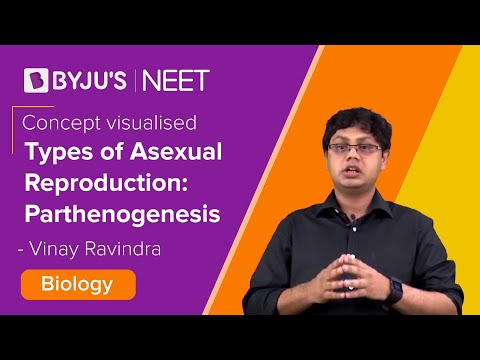“Parthenogenesis is the type of asexual reproduction involving the development of female gametes without any fertilization.”
Animals such as bees, wasps, ants have no sex chromosomes. These organisms reproduce by parthenogenesis. A few plants, reptiles and fish are also capable of reproducing in this manner.
A few organisms such as crayfish, snakes, komodo dragons and sharks can reproduce sexually as well as by parthenogenesis. This is known as facultative parthenogenesis.
Also Read: Parthenocarpy
Types of Parthenogenesis
There are two types of parthenogenesis:
- Natural Parthenogenesis
- Artificial Parthenogenesis
Natural Parthenogenesis
In certain animals, parthenogenesis occurs naturally in their life cycles. This is known as natural parthenogenesis.
Natural parthenogenesis can be further divided into:
Complete Parthenogenesis
A few insects have no males and no sexual phase. Such organisms depend upon self-reproduction. This is known as complete parthenogenesis.
Incomplete Parthenogenesis
The life cycle of a few insects involves two generations:
- Sexual generation
- Parthenogenesis generation
In this, the unfertilised eggs produce males and the diploid eggs produce females. This type of parthenogenesis is called partial or incomplete parthenogenesis.
Artificial Parthenogenesis
The fertilised eggs might sometimes develop parthenogenetically by various chemical and physical means. This is known as artificial parthenogenesis.
Physical Means
- Temperature induces parthenogenesis in eggs. For eg., parthenogenesis is induced if an egg is transferred from -30 to -10°C.
- Parthenogenesis is caused by ultraviolet light.
- Electrical shocks cause parthenogenesis.
- When an egg is pricked by a needle, the development occurs parthenogenetically.
Chemical Means
The chemicals that are responsible for the parthenogenesis of eggs are:
- Chloroform
- Urea and Sucrose
- Strychnine
- Fat solvents
- Acids
- Chlorides
Significance of Parthenogenesis
Parthenogenesis is important for the following reasons:
- Parthenogenesis helps in determining the sex of an individual in honey bees, wasps, etc.
- It supports the chromosomal theory of inheritance.
- Variations from populations are eliminated by parthenogenesis.
- It is the simplest, most stable and easy process of reproduction.
- Polyploidy in organisms is caused by parthenogenesis.
- It helps in the development of advantageous mutant characters.
- Non-adaptive combination of genes is controlled.
- There are no sterile races.
However, the organisms produced by parthenogenesis cannot survive for long due to no recombination of genetic material.
Also Read: Asexual Reproduction
For more information on parthenogenesis and its types, keep visiting BYJU’S website or download BYJU’S app for further reference.
Recommended Video:



